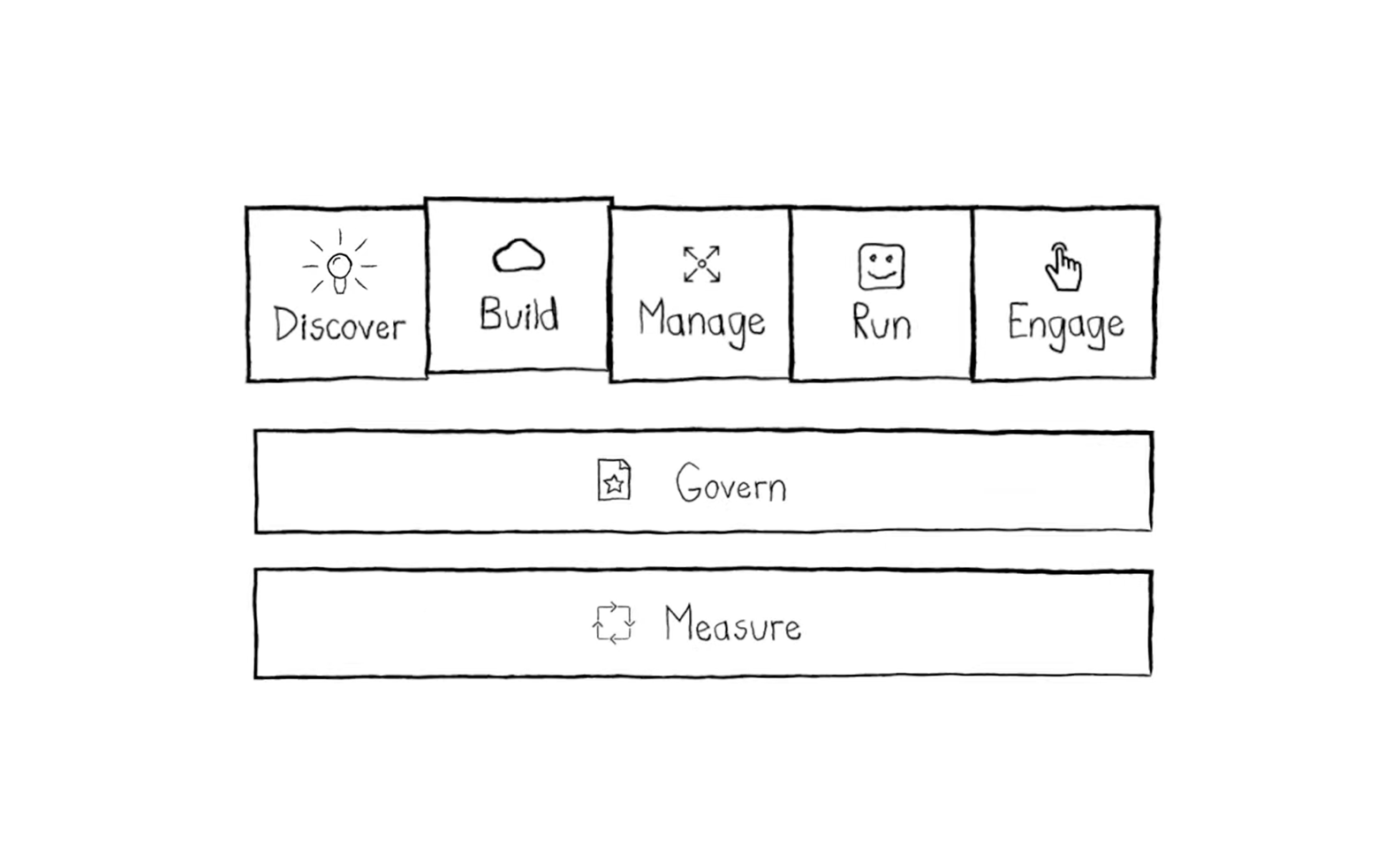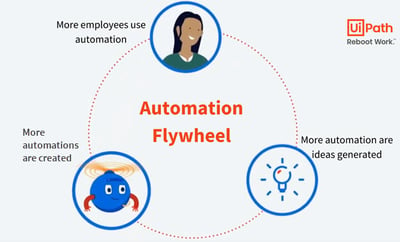Robotic Process Automation (RPA)
Automation software to end repetitive tasks and make digital transformation a reality.
What is robotic process automation?
Robotic process automation (RPA) is a software technology that makes it easy to build, deploy, and manage software robots that emulate humans actions interacting with digital systems and software. Just like people, software robots can do things like understand what’s on a screen, complete the right keystrokes, navigate systems, identify and extract data, and perform a wide range of defined actions. But software robots can do it faster and more consistently than people, without the need to get up and stretch or take a coffee break.
What are the business benefits of RPA?
Robotic process automation streamlines workflows, which makes organizations more profitable, flexible, and responsive. It also increases employee satisfaction, engagement, and productivity by removing mundane tasks from their workdays.
RPA is noninvasive and can be rapidly implemented to accelerate digital transformation. And it’s ideal for automating workflows that involve legacy systems that lack APIs, virtual desktop infrastructures (VDIs), or database access.
Accelerated transformation
Among global executives, 63% say RPA is a major component in digital transformation.
Major cost savings
RPA drives rapid, significant improvement to business metrics across industries and around the world.
Greater resilience
RPA robots can ramp up quickly to match workload peaks and respond to big demand spikes.
Higher accuracy
57% say RPA reduces manual errors.
Improved compliance
92% agree RPA has ‘met or exceeded expectations’ for better compliance.
Boosted productivity
68% of global workers believe automation will make them more productive.
UiPath survey of 4,500 global workers
More value from personnel
60% of executives agree RPA enables people to focus on more strategic work.
Forrester, "Impact of RPA on Employee Experience"
Happier employees
57% of executives say RPA increases employee engagement.
Forrester, "Impact of RPA on Employee Experience"
Why is RPA transformative?
RPA technology is changing how the world gets work done.
Software robots—instead of people—do repetitive and lower-value work, like logging into applications and systems, moving files and folders, extracting, copying, and inserting data, filling in forms, and completing routine analyses and reports. Advanced robots can even perform cognitive processes, like interpreting text, engaging in chats and conversations, understanding unstructured data, and applying advanced machine learning models to make complex decisions.
When robots do these types of repetitive, high-volume tasks, humans are freed to focus on the things they do best and enjoy more: innovating, collaborating, creating, and interacting with customers. Enterprises get a boost too: higher productivity, efficiency, and resilience. It’s no wonder that RPA is rewriting the story of work.

This is the story of work. It started a long time ago, on a Monday... As people got better at work, they built tools to work more efficiently, they even built computers to work smarter, but still they couldn't do enough work! The more work they did, the more work they created, and not the good kind. One day a very smart person figured out how to put the fun back in work, this is their story...
White paper
Transform your business end-to-end
RPA adoption lies at the center of many enterprises’ digital transformation efforts. Learn why RPA is so powerful—and so necessary—with the UiPath white paper, “How End-to-End Automation Enables Business Transformation.”
Where can RPA be used?
Today, RPA is driving new efficiencies and freeing people from repetitive tedium across a broad swath of industries and processes. Enterprises in industries ranging from financial services to healthcare to manufacturing to the public sector to retail and far beyond have implemented RPA in areas as diverse as finance, compliance, legal, customer service, operations, and IT. And that’s just for starters.
RPA has become so widespread because it is broadly applicable. Virtually any high-volume, business-rules-driven, repeatable process is a great candidate for automation—and increasingly so are cognitive processes that require higher-order AI skills.
What features and capabilities are important in RPA technology?
To build and manage an enterprise-wide RPA program, you need technology that can go far beyond simply helping you automate a single process. You require a platform that can help you create and manage a new enterprise-wide capability and help you become a fully automated enterprise™. Your RPA technology must support you end-to-end, from discovering great automation opportunities everywhere, to quickly building high-performing robots, to managing thousands of automated workflows.
Why is RPA the fastest-growing enterprise software in the world?
Rapid, significant return on investment (ROI)
Minimal upfront investment
No disruption to underlying systems
Low-code build environment
Scalable and enterprise-ready

Why is RPA the fastest-growing enterprise software in the world?
When you combine RPA’s quantifiable value with its ease of implementation relative to other enterprise technology, it’s easy to see why RPA adoption has been accelerating worldwide.
RPA can help many different types of industries address their specific operational issues in new and powerful ways.
Leaders of functional areas from finance to customer service to marketing to human resources and beyond find that RPA improves many processes, yielding higher capacity, faster throughput, and fewer errors for key processes.
From a CFO’s perspective, an investment in RPA technology delivers rapid ROI and requires minimal upfront spending compared to other enterprise technology.
IT executives find that RPA can be implemented with little disruption. And because software robots can easily access and work within legacy systems, RPA has become a key enabler for digital transformation. And modern RPA technology offers scalable, enterprise-ready platforms.
Employees find that it’s easy to adopt robotic assistants into their workdays, and that RPA’s low-code approach lets them become citizen developers who can build their own simple automations.
Is RPA the same as artificial intelligence (AI)?
RPA is not AI; AI is not RPA. But the combination of RPA and AI unlocks massive new possibilities for enterprises everywhere. For one thing, RPA technology now makes it possible to insert advanced AI skills in the form of machine learning models, natural language processing (NLP), character and image recognition, and more into RPA robots. Giving robots these AI skills dramatically expands their ability to handle cognitive processes that require things like:
Understanding documents including semi-structured or unstructured data
Visualizing screens (including virtual desktops)
Comprehending speech and carrying on conversations and chats
AI is also making it possible to scientifically discover a complete range of automation opportunities and build a robust automation pipeline through RPA applications like process mining.
And at a time when companies need to accelerate their integration of AI into front-line activities and decisions, many are finding that RPA can serve as AI’s ‘last-mile’ delivery system. Robots can be configured to apply machine learning models to automated decision-making processes and analyses, bringing machine intelligence deep into day-to-day operations.
Check out what RPA + AI has delivered for these companies:


Case Study
ApprioHealth provider using AI + RPA to deliver better pregnancy outcomes


Case Study
Market research firm, Nielsen, deploys intelligent RPA to aggregate and interpret global market data
How do you get started with RPA? How do you scale it?
We’ve worked with many companies on their automation journeys. We find that the most successful enterprises follow a three-stage path:
Webinar
What is Robotic Process Automation?
This on-demand webinar will ground you in the basics of RPA: why it’s so powerful, where it can be applied, what business impact you should expect, and how you can launch a successful RPA initiative.







